Making Smart Decisions
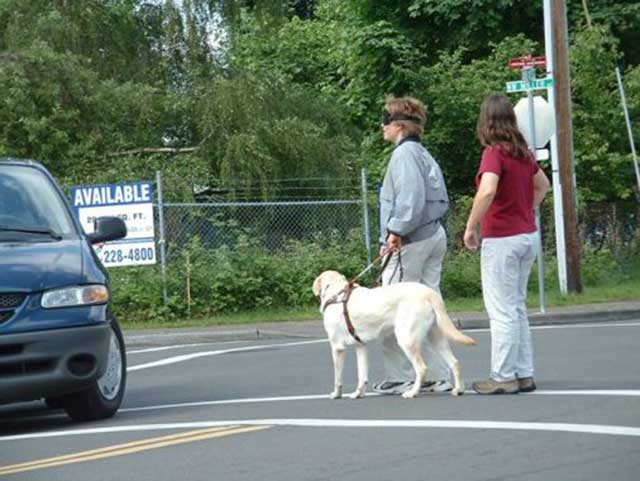
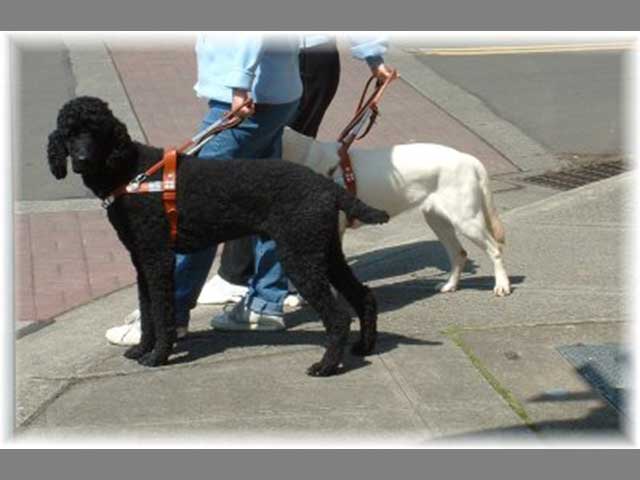
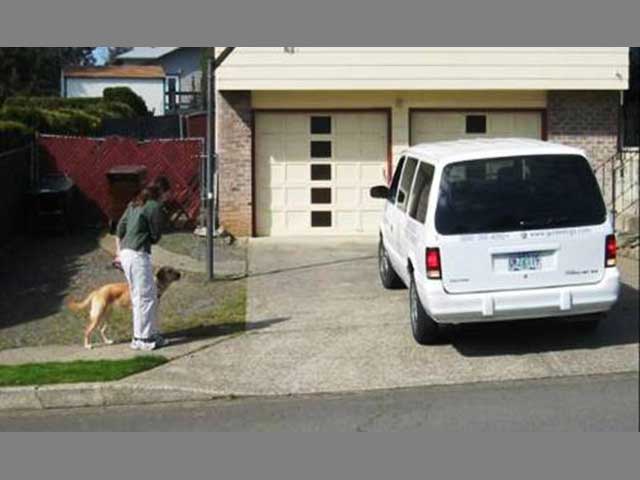
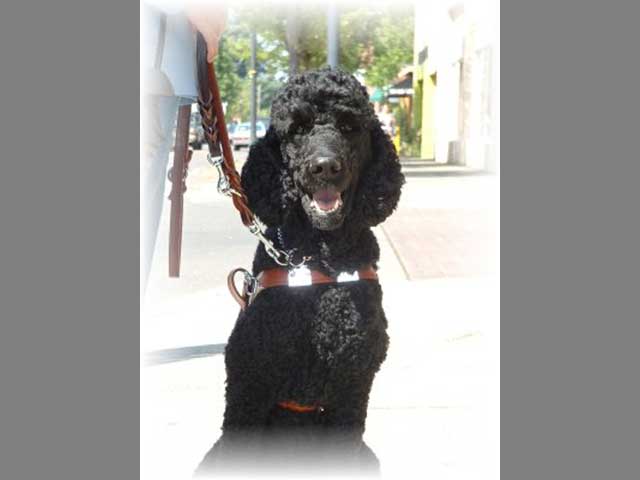
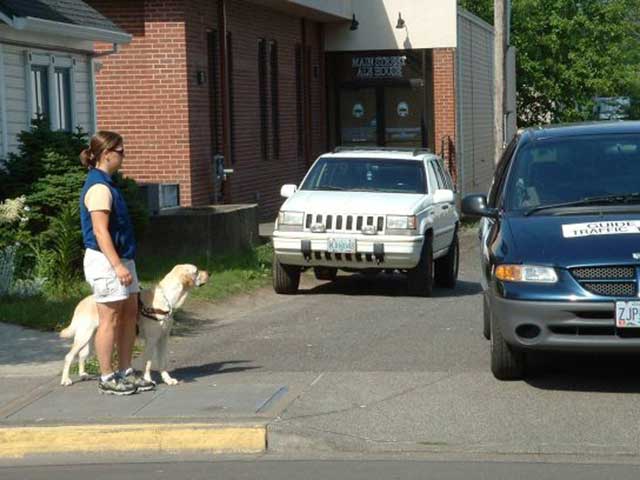
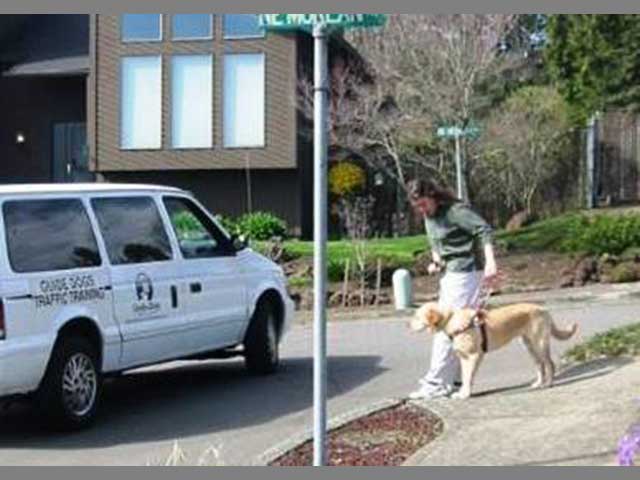
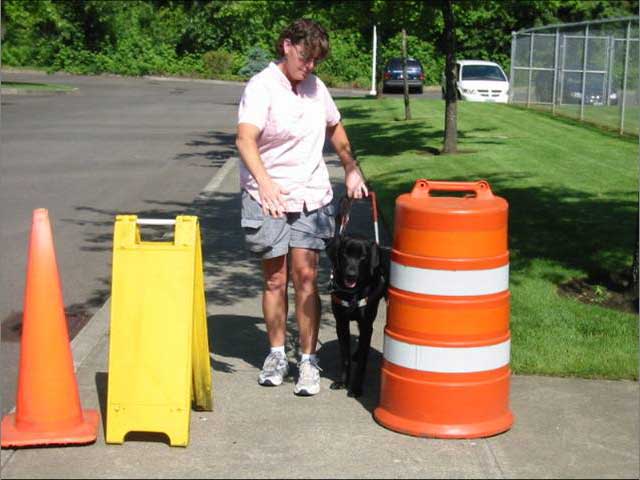
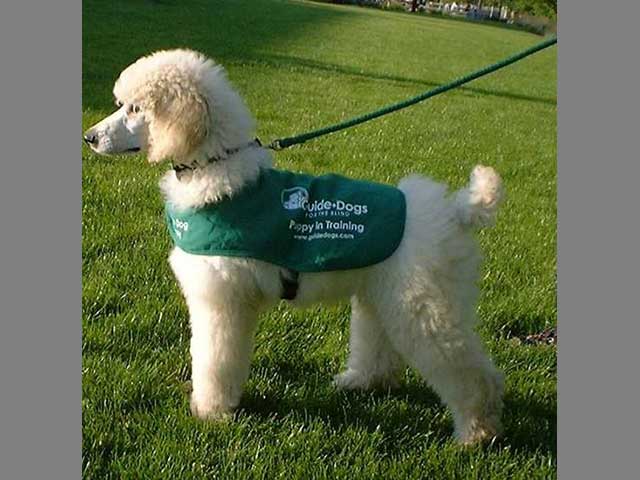
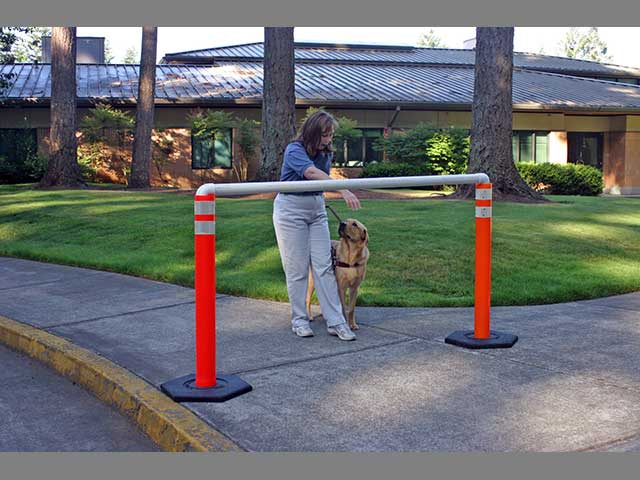
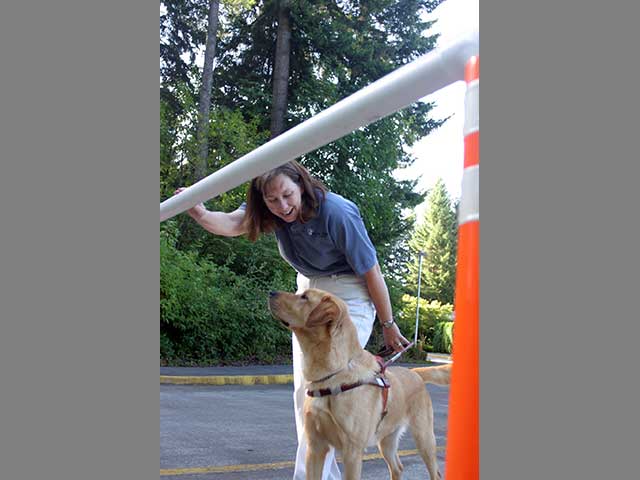
But guide dogs are not just robots following orders. They often tell the person what to do. Because the person cannot see, the dog must often be the one to say, "There's danger up ahead!" At those times, the dog refuses to move, no matter how many times the person gives a "go forward!" command. This is called "intelligent disobedience."
How can a dog tell a person what to do? Wouldn't this cause total chaos?
It's All in the Training
In guide schools, dogs work closely with trainers, starting as little puppies. Ian Ashworth works for Guide Dog Foundation for the Blind, in New York. He says training starts simple. "We begin with an area the dog is comfortable with. We teach the dog to avoid lampposts, mail boxes, or things along a sidewalk." The dog spends a while just walking along, with the human right behind him.
Maria Nuzzi is a trainer at Guide Dog Foundation for the Blind. She places young puppies with volunteers called "puppy walkers." These are people who take the puppies everywhere with them. "The puppy walkers take the dogs to their office, out shopping, into public, on a plane or a train, any place they go," Nuzzi says. "The dogs are learning from a very young age to be a constant companion."
Lori Brown is a training supervisor at Guide Dogs for the Blind, in California. They have a training area set up. It's really more like an obstacle course. There are objects hanging down from above, things on the ground you could trip over, and tight spaces that are difficult to walk through. "We teach the dog to move along, but to stop every time he comes across something that's dangerous or too small for the team to fit through. The dog stops and waits until the person reaches out with his hand or foot." The person uses a sweeping motion that indicates he knows about the obstacle. Then they continue walking.
Now it gets more challenging. "The trainer pretends he doesn't see the obstacle and tells the dog to keep going," Brown explains. "He'll say, 'Come on, let's go!'" The dog is puzzled at first. Why is this silly person trying to walk right into that log in our path? But when the dog refuses to go forward, he hears that he' a good boy and gets a big hug. Brown explains, "This builds the dog's confidence to disobey when there's a problem." The dog has now had his first taste of intelligent disobedience. Over time, the dog learns to be more confident. He never goes forward in dangerous situations, no matter what the human says.
Just when the dog is getting better at making wise decisions, the trainer takes it to a new level. "We bring the dog to busier areas," like a city, Ashworth says. "There are more obstacles, more crowds." There are cars racing by and swarms of people coming from every direction. With so many obstacles, the dog learns to think more quickly and independently. Ashworth says that in the real world, no one can tell the dog whether it's safe to go forward. The dog has to make that decision. "Guide dogs have a huge responsibility to keep the owner safe," he explains. "We teach the dog to trust his own initiative."
The dog knows when to listen to commands, and when to disobey. As Nuzzi explains, "The dogs have a thinking process. They are making decisions on their own."
Thinking of Someone Else
Dogs are born with the ability to preserve their own safety. Without being taught, all dogs avoid holes in the ground or cliff edges. So what makes a guide dog special? Ashworth says there is a difference. "We teach a guide to think of himself as a larger being," he explains. Let's say a tree branch has fallen above a trail. It's hovering about five feet overhead. Most dogs would walk right under it, since they are only about three feet tall. But a guide dog is aware that the human behind her is six feet tall and will bump her head on the branch. Even if the person says "go forward," the dog disobeys.
The same kind of thinking goes into jumping over holes or stepping over a broken sidewalk. It also applies to fear reactions. If she hears a loud noise, Brown says, "She knows she can't just start running!" The dog reacts calmly, and moves together with the person. "She has to think of saving another person, not just her own life and limb," Brown explains.
Training the Human
It seems obvious that the guide dog needs training to help a person. But the person must also learn how to listen to the dog. People need to know when the dog is telling them not to go forward, or when the dog is telling them to move in a different direction. If they say, "go forward," and the dog stands still, the person must figure out why. Nuzzi says, "The biggest thing we tell people is that they have to trust their dog. The dog is trying to pull you the other way because there's something in your path."
Some people learn the hard way. Brown says one person with a guide dog was over his friend's house one day. As they were walking out in the yard, the dog suddenly would not go forward. "He ignored his dog and went ahead anyway. That's when he fell into the pool!"
Brown tells another story of a man who was arguing with his guide dog one day. The man kept telling the dog to walk, but the dog refused to budge. "Finally, someone ran up and said they were standing at the edge of a loading dock and there was a six-foot drop right in front of them. The man realized that the dog was protecting him."
These stories can be funny. But sometimes they can be very serious. It usually takes just one or two times for people to start putting more trust in their guide dogs.
Becoming a Team
Brown says, "The longer they are together, the more the person picks up subtle cues and understands what the dog is thinking." People start being able to sense the guide dog's slightest shift left or right, or when the dog is hesitating. The person gains complete faith in the dog.
The dog also learns. Brown says, "Dogs are much better at reading us than we are at reading them!" The dog figures out all the quirks—how quickly the person walks, whether the person likes to slow down at certain points, how high of a step the person can safely take.
Over time, the person and the dog become close friends who trust and rely on each other.
